A dynamic simulation of the conditions that create the polar front
This project has been included in my "Retirement" section of my website although I made the equipment for the project and used it in my classroom/laboratory for the teaching of Meteorology course in the 2008-2009 academic year, which was my last year on the faculty before my retirement. However, during that year I photographed the apparatus, but did not have time to create the web page for my website. It is now near the end of 2018, and I am finally getting the web page created, so I am posting this page in that portion of my website that is associated with my retirement activities.
The setup occupies a table along the side of my classroom/laboratory near the front of the room. Also on the table, on the right side of the image, are six monitors which display real-time data from my several seismometers and some weather instruments. The polar front model is the device along the left side of the image. It consists of a turntable on which a large Plexiglas cylinder is mounted was well as a vertical metal rod that holds two cameras: one looks vertically downward and the other looks horizontally through the side of the large Plexiglas cylinder. The image that is displayed in this photograph is from the vertical camera and is being shown on the second monitor from the bottom of the stack of monitors.

The view below shows the large Plexiglas cylinder that is partially filled with tap water and, in the center, a smaller Plexiglas tube that contains salt water which has been dyed a color: red in this image but green in some other images. The salt water has a higher density than the tap water because it contains the heavy dissolved salt. The central tube contains the salt water without leakage because its bottom is very flat and makes an effective seal with the Plexiglas base of the apparatus. When the tube is lifted, the dense salt water will be free to flow as a result of all the forces (including gravity) that are applied to it.
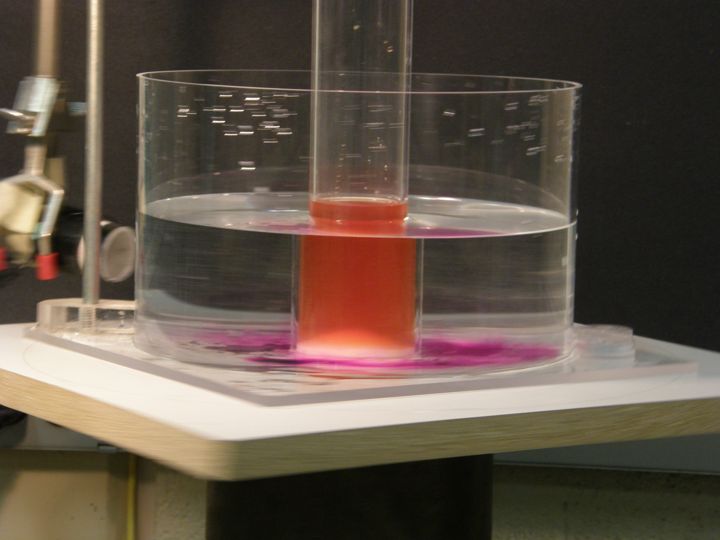
The image below shows the real-time view on the monitor taken from the vertical camera above the apparatus.
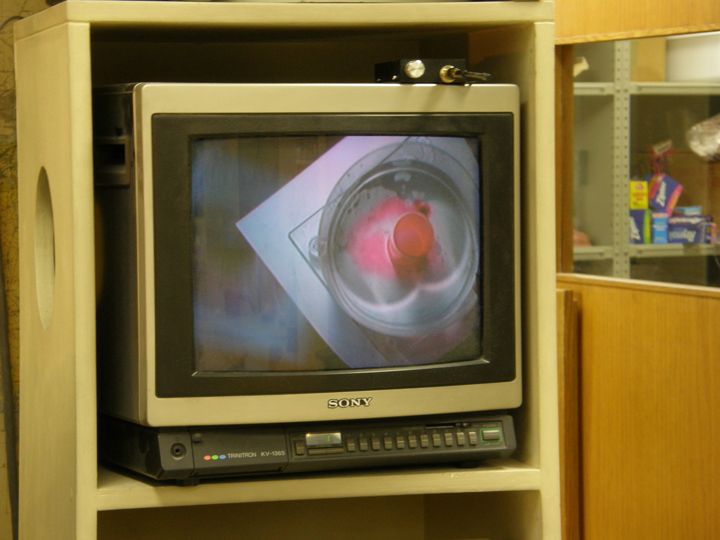
The photograph below shows what happens when the tube is removed for a spinning situation (top of image) and a non-spinning situation (bottom of image). In the non-spinning situation, the expected happens: the dense salt water (dyed green) spreads out evenly, but in the spinning situation, the salt water (also green) remains in a pile with steeply sloping sides.
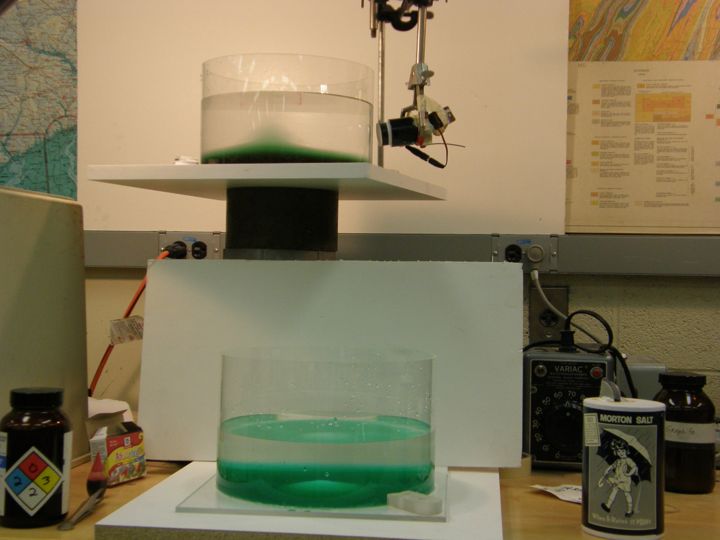
In the image below the construction details of my home-made apparatus are shown more readily. The turntable is a re-purposed reel-to-reel tape recorder body discarded long ago from a Moravian College language laboratory. I also made all the Plexiglas parts.
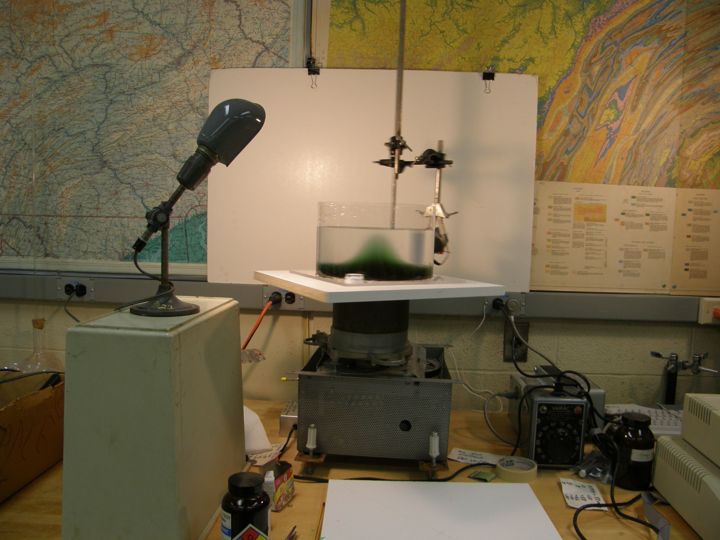
The image below shows spinning situation: the pile of dense dyed salt water does not spread into and beneath the less-dense clear tap water, which similates the winter situation whereby a dome of semi-permanent frigid air forms over the Earth's poles and makes an abrupt surface (the polar front) that is in contact with more tropical and less-dense air from the mid-latitudes. This is the semi-permanent polar front.
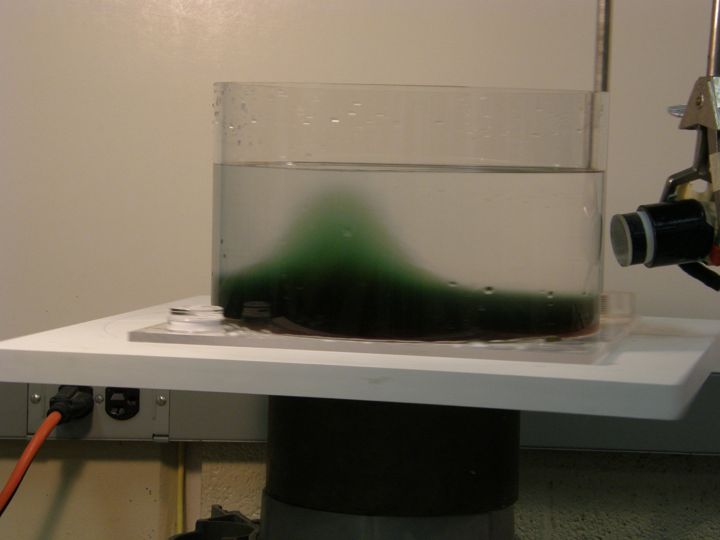
Air at the polar front moves along the front in the direction of spin faster than the surface beneath it; likewise, the model would show particles floating on the water surface above the sloping colored pile of dense water moving faster than the rotating bottom surface beneath it and faster than particles that are located nearer to the edge of the rotating large Plexiglas cylinder. This explains the need for cameras view both vertically and horizontally, and which rotate with the platform. Unfortunately, although I achieved this experimantal result, I didn't record it with photographic images during my last year of teaching before I retired. So, I suppose, you may just have to take my word for my claimed success. But success or not, I did have fun building, optimizing, and operating this dynamic model for my students and my educational program.





